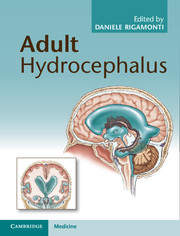Book contents
- Adult Hydrocephalus
- Adult Hydrocephalus
- Copyright page
- Dedication
- Dedication
- Contents
- Contributors
- Prologue
- Section 1 Basic sciences
- Section 2 Pathophysiology
- Section 3 Diagnosis
- 10 The differential diagnosis of normal pressure hydrocephalus
- 11 Core imaging in adult hydrocephalus
- 12 Imaging of the cerebrospinal fluid circulation
- 13 Cerebrospinal fluid dynamics and infusion techniques
- 14 Monitoring of intracranial pressure and assessment of cerebrospinal fluid dynamics
- 15 Cerebrospinal fluid biomarkers in idiopathic normal pressure hydrocephalus
- Section 4 Treatment and outcomes
- Section 5 Associated conditions
- Epilogue
- Index
14 - Monitoring of intracranial pressure and assessment of cerebrospinal fluid dynamics
from Section 3 - Diagnosis
Published online by Cambridge University Press: 05 February 2014
- Adult Hydrocephalus
- Adult Hydrocephalus
- Copyright page
- Dedication
- Dedication
- Contents
- Contributors
- Prologue
- Section 1 Basic sciences
- Section 2 Pathophysiology
- Section 3 Diagnosis
- 10 The differential diagnosis of normal pressure hydrocephalus
- 11 Core imaging in adult hydrocephalus
- 12 Imaging of the cerebrospinal fluid circulation
- 13 Cerebrospinal fluid dynamics and infusion techniques
- 14 Monitoring of intracranial pressure and assessment of cerebrospinal fluid dynamics
- 15 Cerebrospinal fluid biomarkers in idiopathic normal pressure hydrocephalus
- Section 4 Treatment and outcomes
- Section 5 Associated conditions
- Epilogue
- Index
Summary
Keywords
- Type
- Chapter
- Information
- Adult Hydrocephalus , pp. 150 - 163Publisher: Cambridge University PressPrint publication year: 2014
- 1
- Cited by



